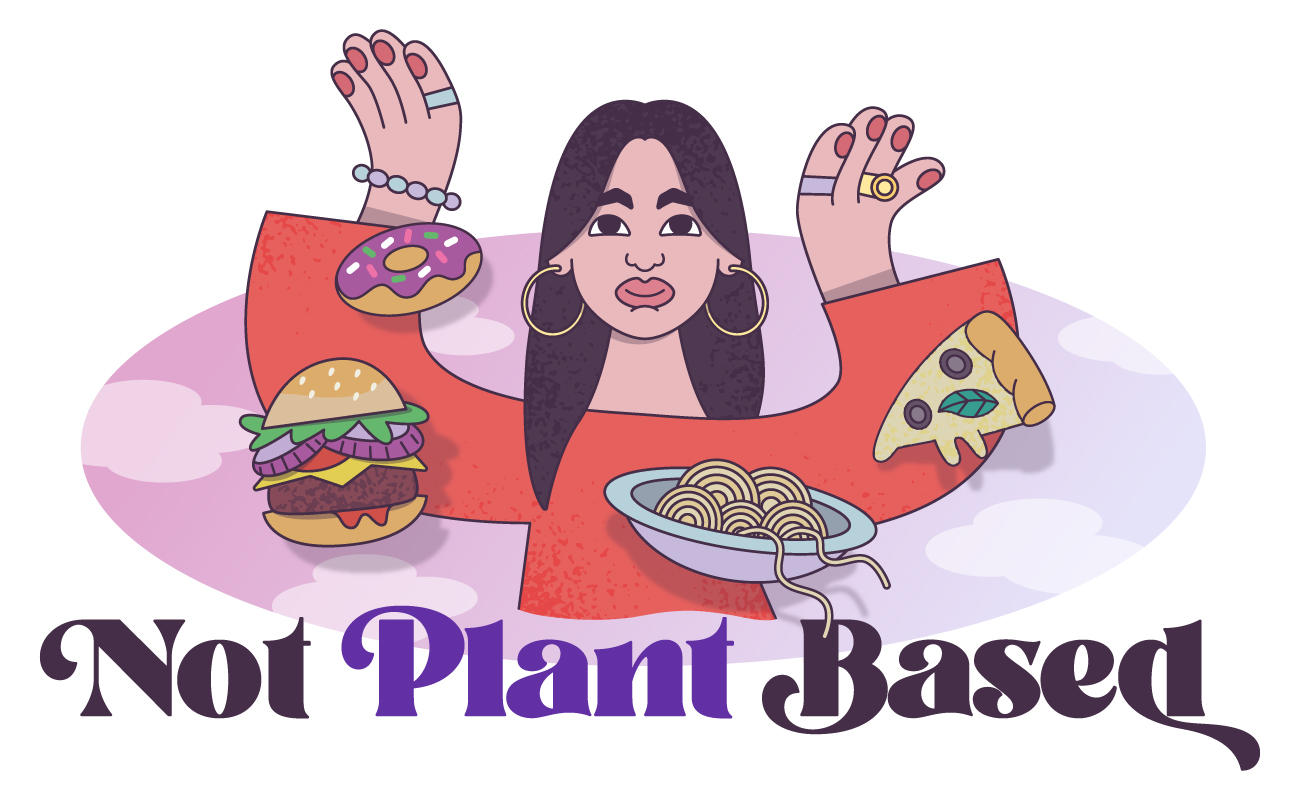
I’ll never forget my friend Sophie’s response when I told her I’d been diagnosed with anorexia. ‘Well, you always have been a healthy eater,’ she remarked. It’s true that, objectively, that my diet has never been ‘unhealthy’. I’ve always eaten apples once or twice a week, I enjoy a dressing-soaked salad that’s outgrown it’s plate, and I’d always opt for granola and 1000 different kinds of fruit over a fried breakfast. BUT I could never not finish the whole tub of cookie dough B&J and sometimes, when mum was out, I’d bake an entire tray of brownies and eat 80 per cent of them whilst watching a holocaust documentary. Aged eight my brother and crept out the house to walk the eight minute pilgrimage to an all-you-can-eat Chinese buffet. Because, well, all you can eat. But Sophie – whose lifelong diet consisted of largely McNuggets, cheeseburgers, steak and chicken shish kebabs – saw my occasional orange juice as practically virtuous. For years, I tried to expand her culinary horizons with my homemade spanakopita and roasted vegetable medleys. I succeeded with beetroot (pickled only) but not much else. She tried, and often finished her plate making all the noises. But would she ever eat it again? Probably not. You see, my cooking couldn’t compete with the stubborn lure of a forever habit. Sophie’s mum wasn’t much of a cook, and her traditional mechanic dad worked night shifts, rarely stepping foot in the kitchen before 2am.
And in a bid to escape her mum’s gristly spag bol, she’d turn to that sweet, sweet drive thru. Before you ask – she wasn’t much bigger than me, or any less healthy. Clearly no amount of sprinked sumac would make her eat any differently. And why the hell should she? I thought of this last week, when I read about the latest proposed healthy eating initiative, designed to get out grubby tubby paws off the chips and chocolate – a 20 per cent tax on so-called ‘junk’ food. The inference being that people choose to eat a particular diet, and will opt for other, cheaper foods instead. But it won’t work. Sophie, and her inherent distain for anything that was once in soil, is a perfect example as to why.
Her affiliation for the plasticy cheese that sticks to the back of the wax paper wrapping (salivating) is stronger than her desire to save a few quid. The result? She’ll just become a whole lot poorer. The powerful force lies with something called social or cultural norms – a set of values/behaviours that constitute what we believe to be a ‘normal’ way of living. According to sociological studies, veering away from said social/cultural norms even slightly feels almost impossible. Fascinated by the theory of cultural norms, I approached food writer for the Washington Post Jamie Schler to help me understand the true importance of this missing link. She says: ‘The first thing to understand about culinary culture is that it has two important components: what we eat (the food and dishes) and how we eat (the rituals, traditions, meal organisation, etc). I think that culture plays a role in the foods we eat – we continue to cook the dishes we grew up with, we eat what we find around us and what we are familiar with. Food connects us to family and a heritage and most people find comfort in this familiarity and the traditions. But following the eating/dining traditions plays a big role, as well, in what we choose to eat.’

Eminent psychologist Geert Hofstede says the behaviours of a group we identify with are perhaps the most influential factor for constructing our identity. A 2015 review published in the journal health psychology review looked at 33 studies that analysed the cause of obesity. All 33 found these so-called ‘in-group’ norms to be a significant factor. Some scholars say this is particularly strong when parents practice the same behaviour, as feeding guides maternal attachment. The same goes for exercise behaviours too. A study by researchers at Pennsylvania State University found that parents who work long, tiresome days (usually in manual jobs) are less likely to exercise after work. Children therefore see that rest is an important fragment of health, and are therefore less likely to prioritise physical activity. In other words, you can’t/won’t do what you don’t see. Ethnicity-focused studies offer further proof of the theory. Research continually finds that South Asian and Black African and Black Caribbean Caribbean children are up to twice as likely to be obese than their white, British counterparts. Whilst some of this is related to socioeconomic factors, studies have shown cultural norms can be just as influential. Some of the explanation is rooted in cooking styles, some is to do with differences in ideal body shape. Or, as one British Asian woman told me, in an overwhelming desire to ‘fit in’, children develop a sudden preference for traditional British beige food.
So, is Sophie confined to her restrictive meal plan forever? ‘Cultural eating patterns can be changed but it takes thought and effort,’ says Schler. ‘We need to access good, fresh products, organize time for shopping and many of us need to gain the confidence to cook. I forget that not everyone cooks. ‘Changing our food culture and eating habits necessitates slowing down, reading, experimenting and thinking about how and when we eat. And doing it with friends and family.’ And for the majority of Brits like Sophie, paying the bills, looking after parents/grandparents/children and a labour-intensive full-time job leaves little room for cookery courses or trips to a nearby allotment. So sure, slap a tax on Sophie’s cheeseburger but trust me, it won’t stop her eating it.



